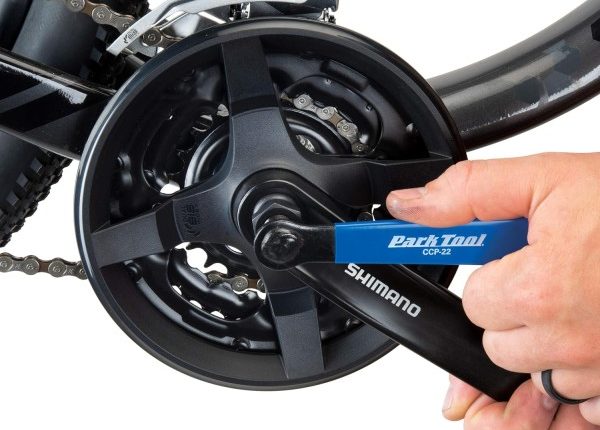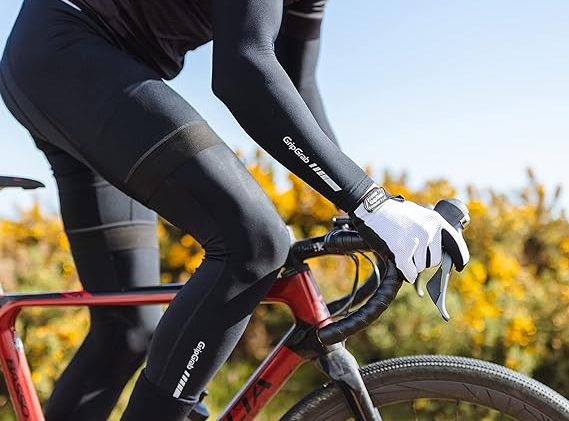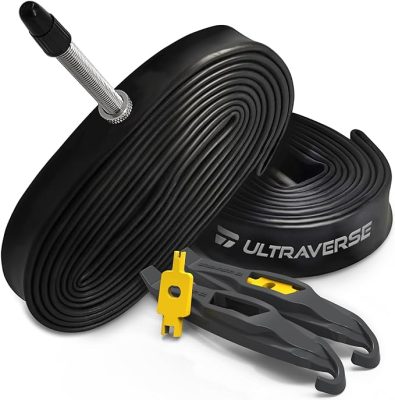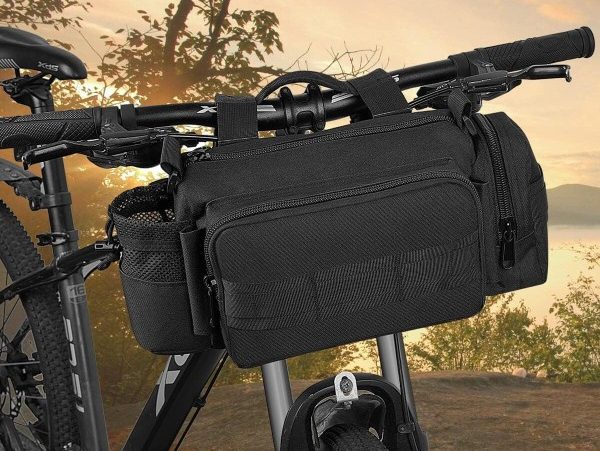Are you tired of struggling through treacherous terrains, feeling like your fat bike is barely gripping the ground? Well, get ready to revolutionize your riding experience with the best fat bike tires of 2023. These tires are not just ordinary tires; they are engineered to provide exceptional traction, stability, and control, allowing you to conquer any trail with confidence. But which ones should you choose? Stay tuned as we unveil the top-rated fat bike tires that will take your off-road adventures to new heights.
Best fat bike tires of 2023 review
5. Schwalbe Jumbo Jim Evo Fatbike
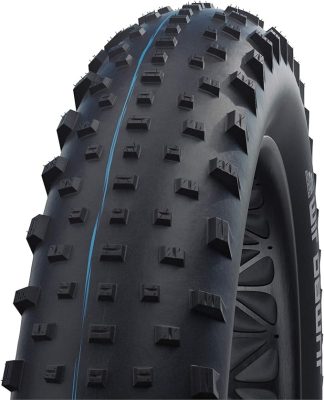
The Schwalbe Jumbo Jim Evo Fatbike tires are the best choice for cyclists who require exceptional traction and control on soft, rough, and loose terrains. These tires are designed with the Jumbo Jim technology, which offers an extremely light and large volume tire that can handle low air pressure.
With widths ranging from 100 to 120 millimeters, the Jumbo Jim provides an open tread with medium stud height, ensuring excellent rolling resistance and low weight. The Addix Speedgrip compound used in these tires makes them suitable for XC, AM, and Trail riding.
Additionally, the Super Ground construction of the Jumbo Jim tires offers improved SnakeSkin construction for cut-proof durability and puncture protection. With Schwalbe’s commitment to tire technology and its extensive product portfolio, these Jumbo Jim Evo Fatbike tires are a reliable and high-performance choice for any cyclist.
4. MOHEGIA Fat Tires
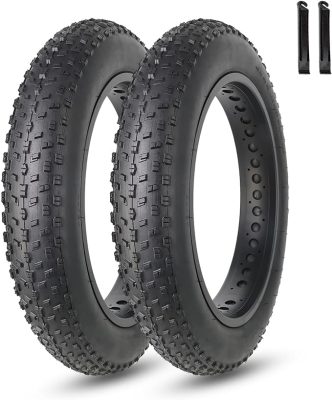
For those seeking the ultimate off-road riding experience, the MOHEGIA Fat Tires are the unrivaled choice. These 20/26 x 4.0-inch tires are designed with an aggressive tread pattern, providing greater traction on both pavement and loose dirt. With a 4.0-inch wide tire volume, you can expect better control and less drag, ensuring a smooth and enjoyable ride.
The MOHEGIA Fat Tires are made with heavy-duty rubber, offering superior puncture resistance for added durability. These tires are suitable for various types of bikes, including fat bikes, electric bicycles, wide mountain bikes, beach trikes, and snowmobiles. With their foldable carbon steel bead, they’re easy to fold and carry, making them convenient for transportation.
3. HEB ALLSCAPE Heavy Duty
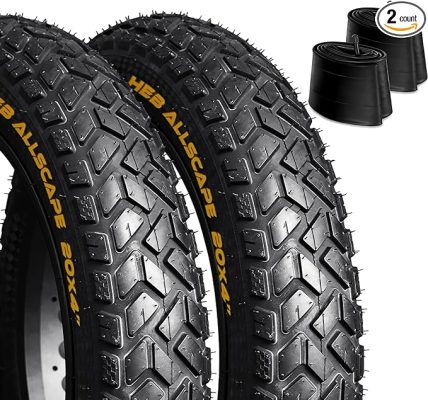
Ideal for off-road enthusiasts seeking exceptional stability, control, and traction, the HEB ALLSCAPE Heavy Duty fat bike tires are the ultimate choice for adventure seekers in need of durability and performance. These 20×4 / 26×4 bike tires are designed for off-road adventures, offering outstanding stability, control, and traction on rough terrain. With their advanced motorcycle tire technology, these tires provide enhanced protection and increased payload capacity. Made with high-quality materials, they’re durable and long-lasting.
The oversized 4-inch width ensures excellent stability and control, while the optimized tread pattern delivers traction in all conditions. These tires also reduce rolling resistance for improved speed and efficiency. Easy to install and compatible with most electric bikes that use 20 or 26 wheels, the HEB ALLSCAPE Heavy Duty fat bike tires guarantee an unforgettable riding experience.
2. Mongoose Fat Tire Bike Tire
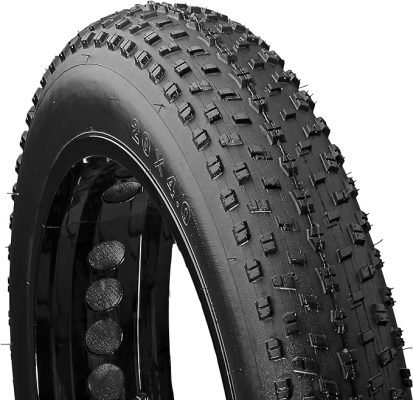
With its knobby, aggressive tread pattern and heavy-duty rubber construction, the Mongoose Fat Tire Bike Tire is a top choice for fat bike enthusiasts seeking unparalleled traction and durability. Designed specifically for fat bicycles, this tire boasts a 20 x 4 inch or ETRTO size 100-406 heavy-duty rubber, making it ideal for tackling any terrain.
The knobby tread pattern not only provides excellent traction but also smoothes out the trail and rolls over obstacles easily. Customer reviews praise the tire’s quality, tread, and excellent grip. Some users compare it favorably to the original Kenda tire, noting a quieter ride and better performance.
While there have been concerns about the Mongoose tire’s weight capacity, overall feedback has been positive, with users reporting high mileage and satisfaction with its appearance and solid construction.
1. ULTRAVERSE 20×4 E-Bike Fat Tire
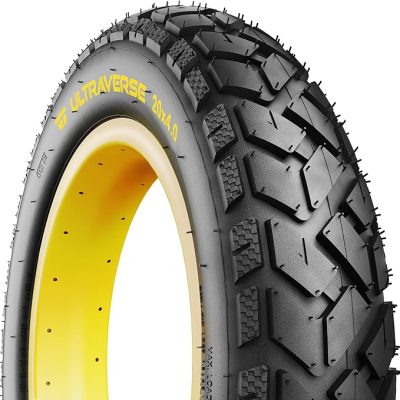
The ULTRAVERSE 20×4 E-Bike Fat Tire stands out as the top choice for avid mountain bikers and electric bike enthusiasts seeking unparalleled durability and high-performance capabilities. Crafted with top-tier rubber and advanced anti-puncture technology, these tires are suitable for various bike types, including mountain bikes and electric bicycles. They provide a smooth and protective ride on both street pavement and off-road terrains, thanks to their all-terrain directional tread and superior density for a comfortable and reliable ride.
Installation is easy, and the tread offers lasting durability, making it a solid investment for lasting quality in your cycling experience. Customers are highly satisfied with the durability and performance of these tires, noting their quieter ride, smoothness, and comfort. With its 20×4 inch size, motorcycle herringbone pattern, and thick tread, the ULTRAVERSE 20×4 E-Bike Fat Tire is a versatile choice for street and trail adventures.
What to consider when choosing the best fat bike tires
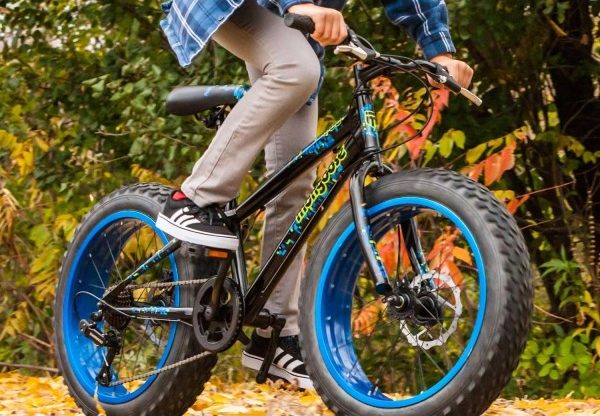
Tread Pattern and Design
Consider the tread pattern and design of fat bike tires as a crucial factor when selecting the best option for your riding needs. The tread pattern plays a significant role in determining the tire’s performance on different surfaces and conditions. Here are four key points to consider:
- Knob Size and Shape: The size and shape of the knobs on the tire affect traction and grip. Larger, more aggressive knobs provide better traction in loose or muddy terrain, while smaller knobs are suitable for hard-packed trails.
- Spacing between Knobs: The spacing between knobs determines how well the tire sheds mud and debris. Tires with wider spacing between knobs prevent mud and debris from getting stuck, ensuring optimal traction.
- Directional vs. Non-Directional Tread: Directional tread patterns have a specific orientation that enhances traction in one direction, such as climbing or cornering. Non-directional tread patterns offer more versatility and perform well in various riding conditions.
- Tread Compound: The type of rubber compound used in the tread affects the tire’s grip, durability, and rolling resistance. Softer compounds provide better traction but may wear out faster, while harder compounds last longer but may sacrifice grip.
Casing and Construction
To choose the best fat bike tires, it’s important to carefully consider the casing and construction of the tire. The casing refers to the layers of material that make up the body of the tire, while the construction refers to how these layers are put together.
A good fat bike tire should have a durable casing that can withstand the rigors of off-road riding, such as rocks, roots, and rough terrain. Look for tires with a puncture-resistant casing made from high-quality materials like nylon or Kevlar.
Additionally, consider the construction of the tire. A well-constructed tire will have strong sidewalls and a stable tread pattern, providing optimal traction and stability on various surfaces.
Tubeless Compatibility
Continuing our exploration of choosing the best fat bike tires, let’s now turn our attention to the important factor of tubeless compatibility. When selecting fat bike tires, it’s crucial to consider whether they’re tubeless compatible. Here are four key points to keep in mind:
- Improved Performance: Tubeless tires offer several benefits, including reduced rolling resistance, increased traction, and better control. They allow you to run lower tire pressures without the risk of pinch flats, resulting in a smoother and more comfortable ride.
- Puncture Resistance: Tubeless setups can provide enhanced puncture resistance compared to traditional tubes. The sealant inside the tire can seal small punctures on the fly, preventing flats and allowing you to keep riding.
- Weight Savings: By eliminating the tube, tubeless setups can reduce rotational weight, improving acceleration and maneuverability. This weight savings can make a noticeable difference, especially in off-road conditions.
- Easy Maintenance: Tubeless tires are easier to maintain as they require less frequent tube changes. Additionally, they can be easily repaired on the trail with a plug or sealant, getting you back to riding faster.
Choosing tubeless compatible fat bike tires allows you to unlock the full potential of your bike, providing improved performance, puncture resistance, weight savings, and easy maintenance.
Terrain and Riding Conditions
When it comes to choosing the right fat bike tires, it’s crucial to consider the terrain and riding conditions you’ll be encountering. The first factor to consider is the type of terrain you’ll be riding on. If you’re going to be riding on mostly hard-packed or paved surfaces, a tire with a lower tread pattern and lower rolling resistance would be ideal.
On the other hand, if you’ll be riding on loose or soft terrain such as sand or snow, you’ll want a tire with a more aggressive tread pattern to provide better traction. Additionally, the width of the tire is important. Wider tires offer more stability and flotation on soft terrain, while narrower tires are better suited for hard-packed surfaces.
Finally, consider the weather conditions you’ll be riding in. If you’ll be riding in wet or muddy conditions, look for tires with larger knobs and more aggressive tread patterns for enhanced grip.
Frequently Asked Questions
What Is the Ideal Tire Pressure for Fat Bikes?
The ideal tire pressure for fat bikes depends on various factors such as rider weight, terrain, and personal preference. Generally, fat bike tires run at lower pressures compared to regular mountain bike tires.
This is because lower pressures provide better traction and flotation on soft surfaces like snow and sand. However, it’s important to find a balance to avoid pinch flats or tire damage.
Can I Use Regular Mountain Bike Tires on a Fat Bike?
Yes, you can use regular mountain bike tires on a fat bike, but there are a few things to consider. Fat bike tires are wider and have a larger volume to provide better traction and flotation on soft surfaces. Regular mountain bike tires may not provide the same level of performance on snow or sand.
Additionally, the width of the tire must match the width of the rim to ensure proper fit and stability. It’s always best to consult with a bike expert to determine the best tire options for your fat bike.
Are Tubeless Fat Bike Tires Worth the Investment?
Tubeless fat bike tires are worth the investment. They offer several advantages over traditional tubed tires. Tubeless tires eliminate the risk of pinch flats, provide better traction and control, and allow you to run lower tire pressures for improved comfort and grip. Additionally, they’re less prone to punctures and can be easily repaired on the trail.
Do Fat Bike Tires Wear Out Faster Than Regular Mountain Bike Tires?
Fat bike tires tend to wear out faster than regular mountain bike tires due to their larger size and increased surface area. The wide, knobby tread on fat bike tires provides excellent traction on soft terrain, but this also means that the knobs wear down more quickly.
Additionally, fat bike tires are often ridden in extreme conditions, such as snow and sand, which can further accelerate wear. Regular maintenance, such as checking tire pressure and rotating tires, can help extend their lifespan.
Conclusion
The best fat bike tires of 2023 are a game-changer for avid riders seeking ultimate off-road adventures. These top-rated tires offer exceptional traction and stability on various terrains, from loose sand to snow-covered trails.
With their outstanding performance and durability, they’ll revolutionize your cycling experience and allow you to conquer any trail with confidence. Get ready to ride like never before and experience the thrill of exploring the great outdoors with these incredible fat bike tires. They’re truly a game-changer.
